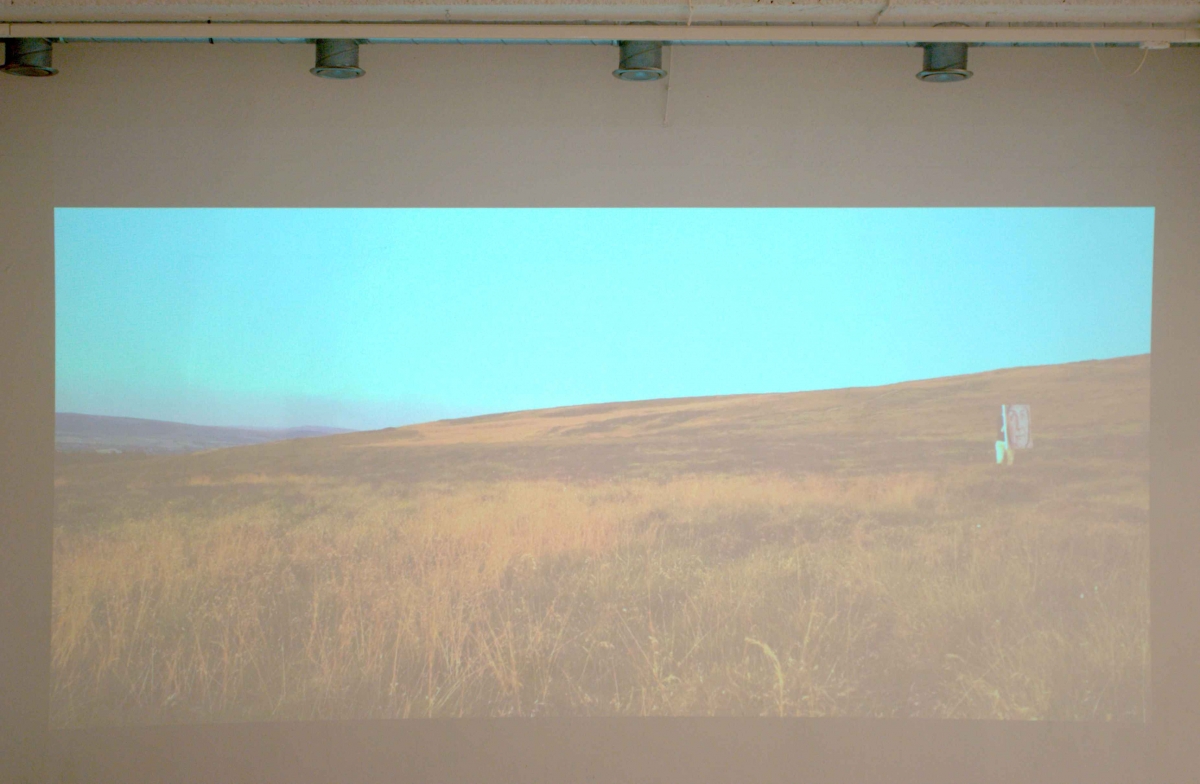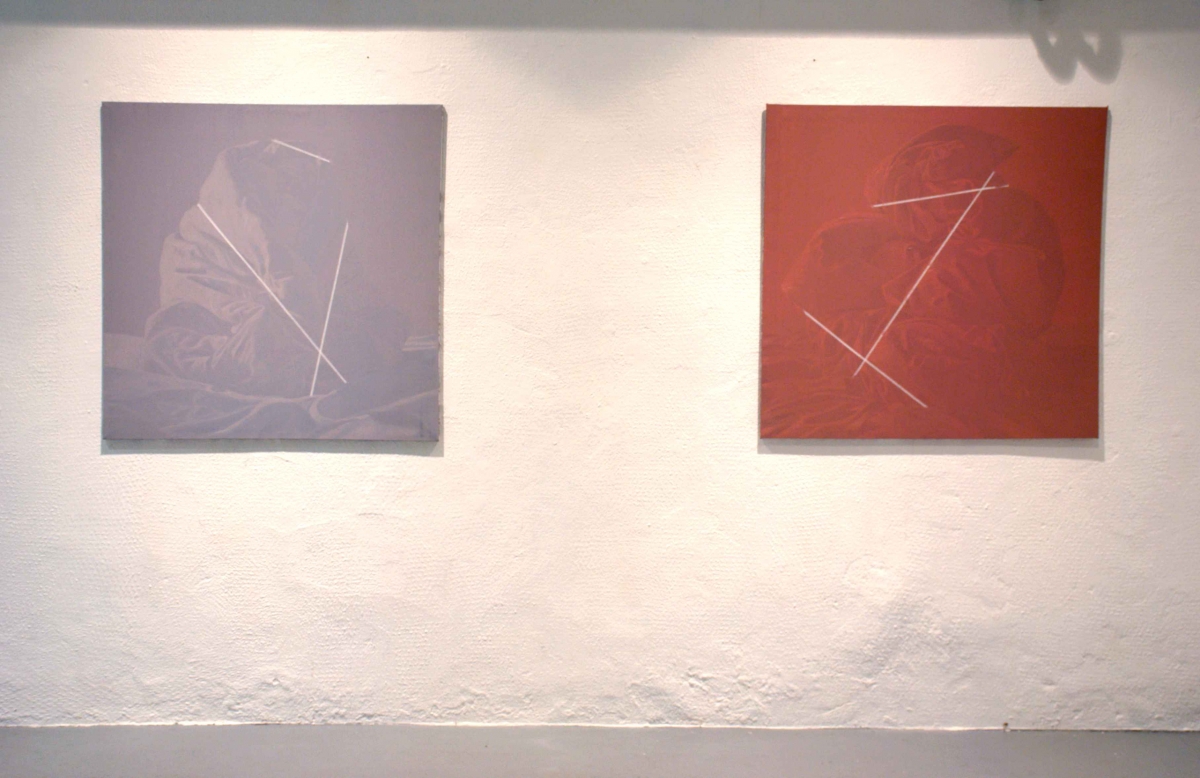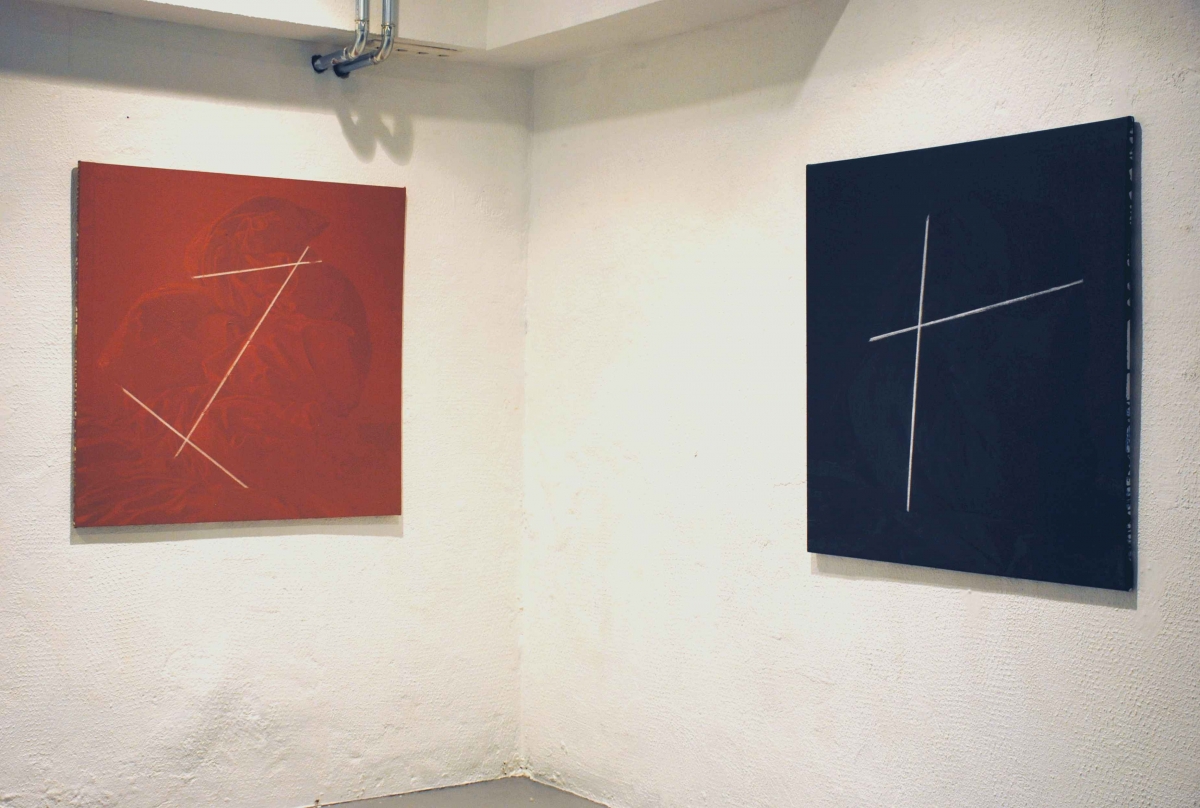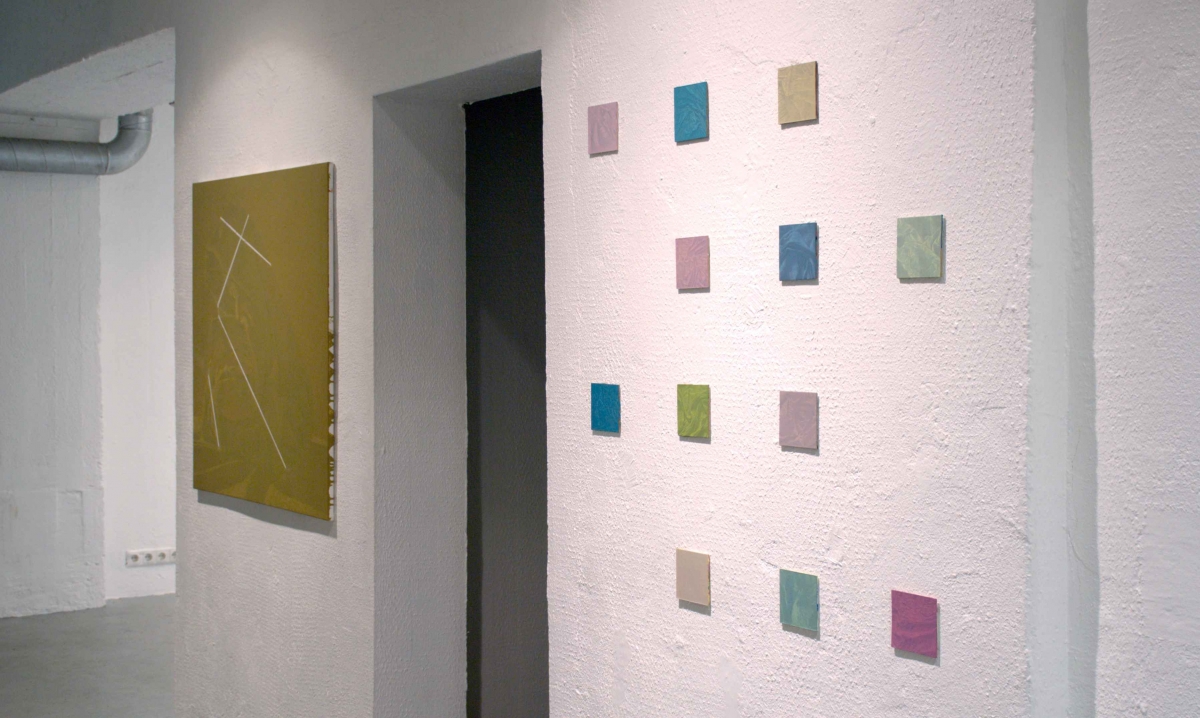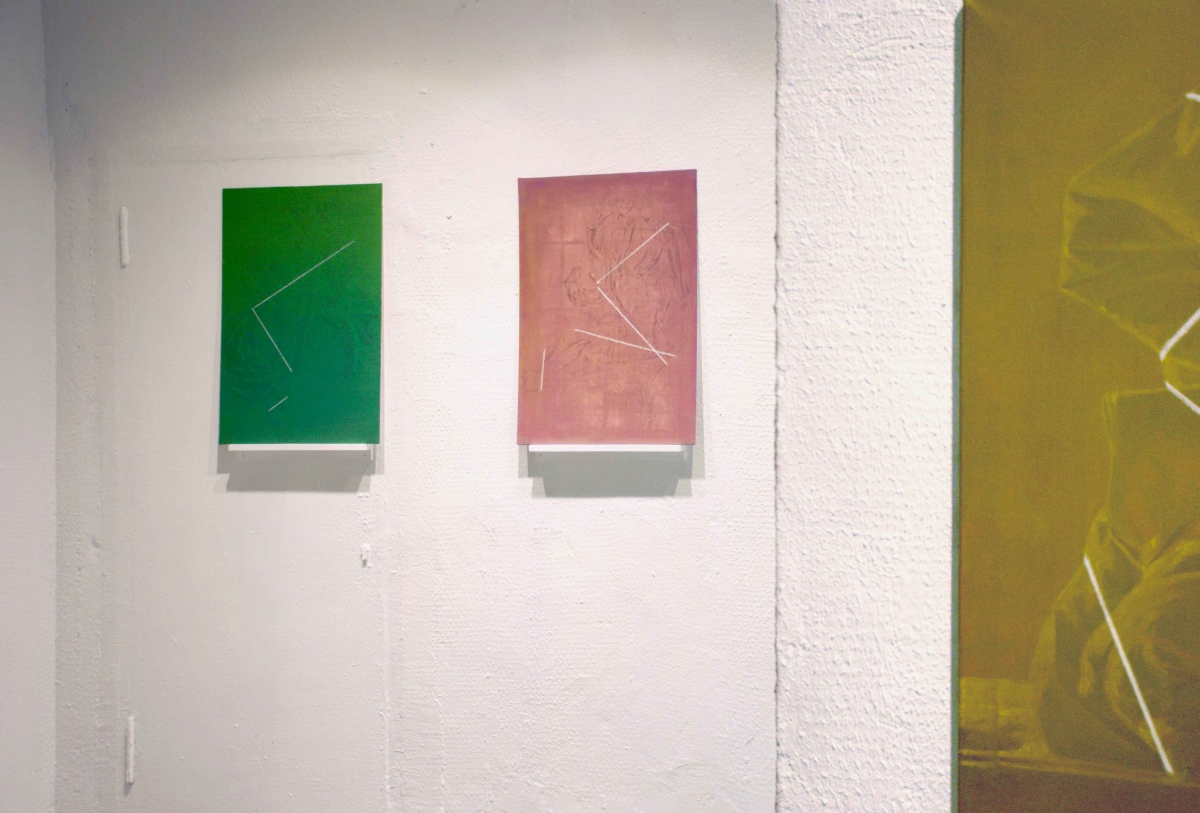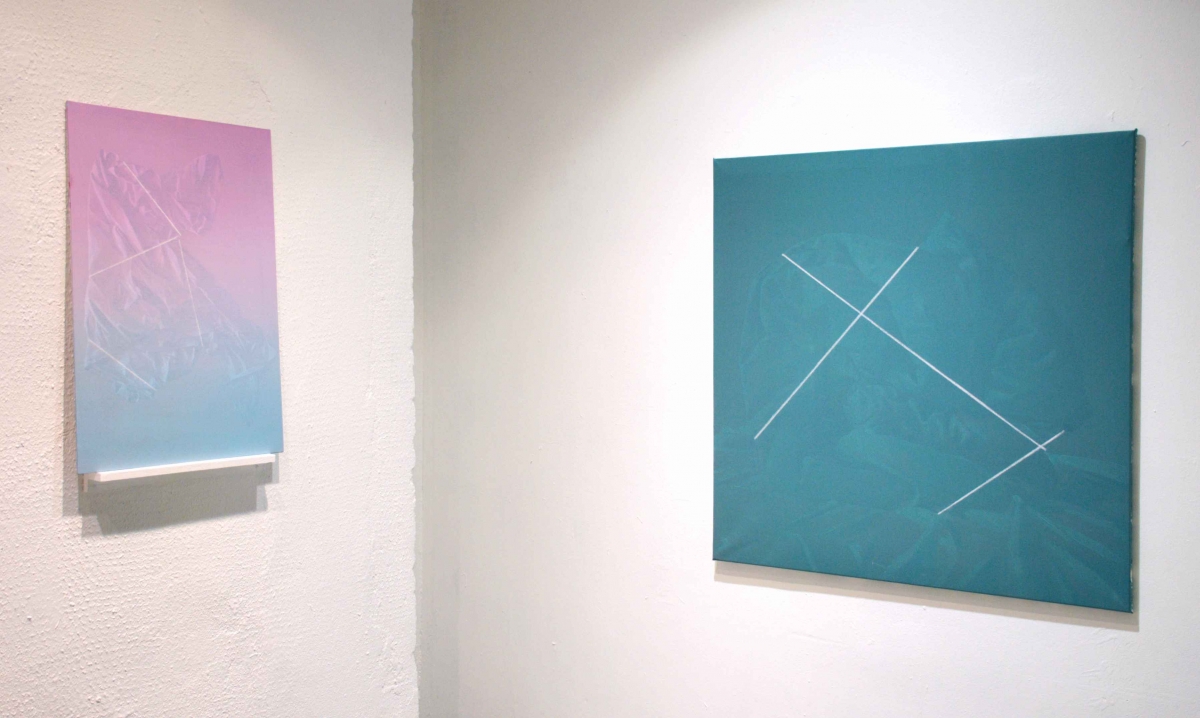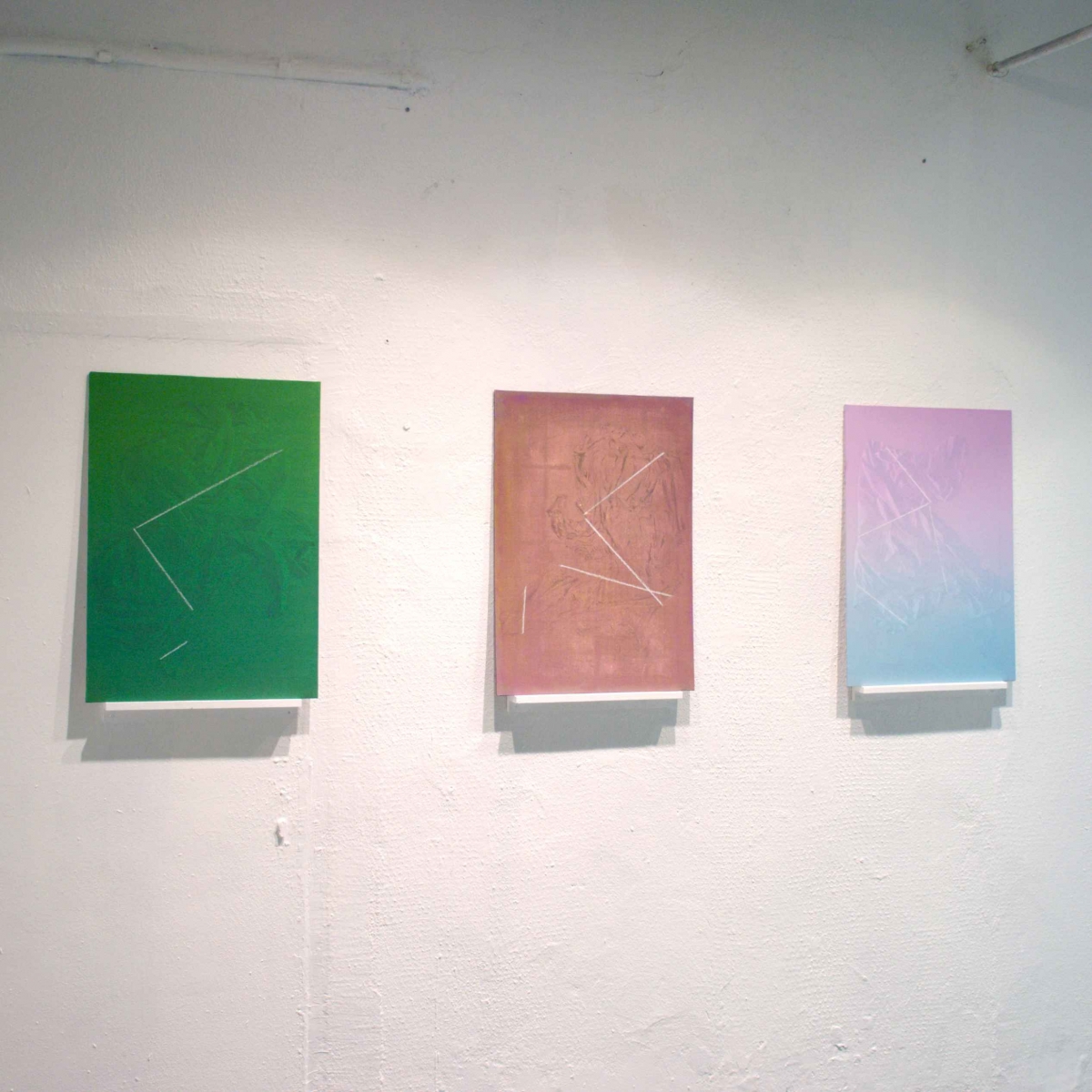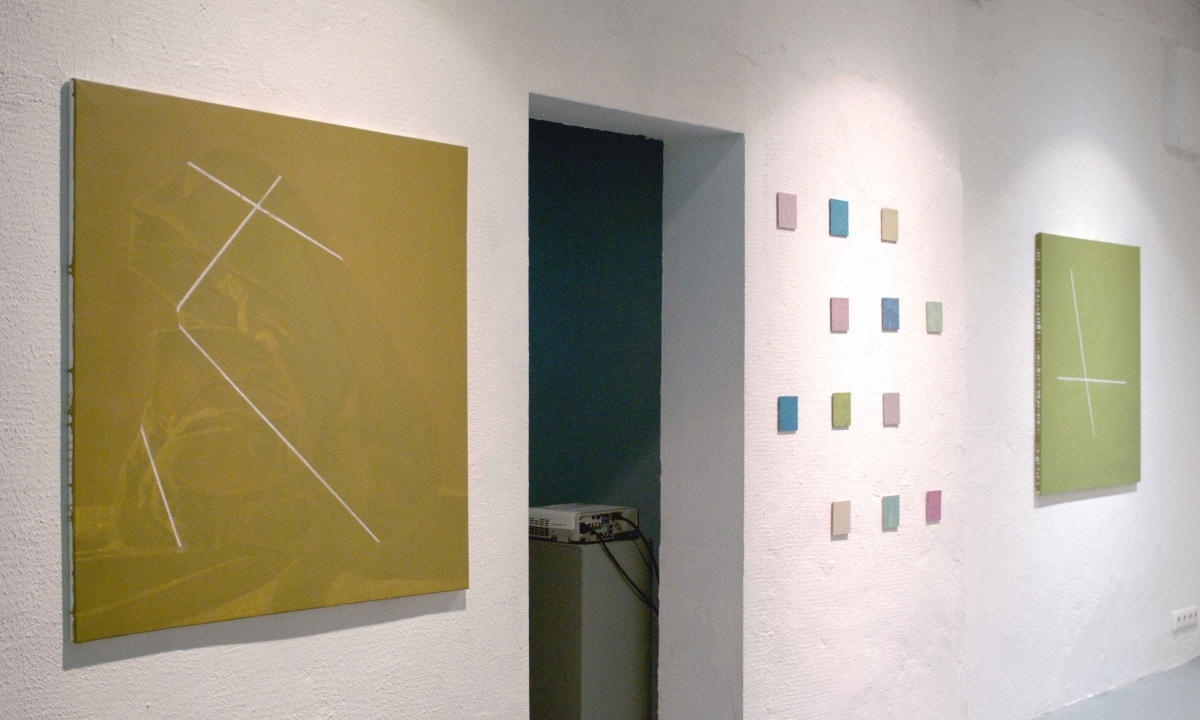I have been trying to look after the walls in my studio. As an act of recognition, I often lean against them, I look at them, and think about them. It’s fair to say that I have been doing this on a daily basis. After a month, however, I found myself walking the halls of the sculpture department in the Estonian Academy of Art, yearning for another voice. When I ran into Jamie Avis, my strategies of care became enriched. A small conversation, which repeated itself over the following weeks, led me to the staircase of Vent Space, where the artist’s solo show opens, with the title ‘I Cairn’.
At the first exhibition of the gallery season, the walls have a variety of paintings. Each one has a colour or a gradient that fills the canvas. Soft grey next to a warm red. Through colour, each painting can be a different space, but they are not limited to that. The works are not mere scenery. Placed together in a space, each painting transforms into a moment in the day. I jump from a foggy October afternoon to an early spring April, just before noon. Or a midsummer late sunset (in California?).
At the same time, I look at a portrait. A protagonist inhabits these moments in time. Is it a shape, a structure, a paper ball, or a ‘stumbled-on trace’? Thinking in terms of landscapes, it could be a rock. However, Jamie Avis makes these rocks soft and tactile, like fabric, as if I could (and want to!) wrap myself around them. But lines of chalk beat me to it, as they try delicately to measure the space of the object, or contain it in a smooth yet well-structured hug. In presenting these soft creatures, the artist continues to challenge the rules of portraiture, a recurring action throughout his artistic practice.
The paintings are accompanied by two moving images, which share the journey with the visitor. I see a painting, not carried by walls this time, but by the artist himself. The travelling painting is a portrait of Avis’ mother. The artist walks with her through North Yorkshire, the area surrounding his family home. I can’t help but remember a statement I once heard, ‘A person is a landscape.’ When my thoughts reach the video, I see hills and shortcuts, sun and shadows, the changing of the seasons in his mother’s countenance.
The landscape is filled with dry grass, rocks, heaps of stones, and holes that are dim traces of the area’s mining past. A large-scale projection in the main room resembles a sunset walk. The colours in this piece align me with the present (as one’s experience of a sunset is often in person). The second video in a more intimate corner of the project space omits colour, and calls for a sensation of remembrance or nostalgia. It feels as if something has happened before, that things are continuing and go way back. These sensations line up with Avis’ paintings. Using both media formats, he succeeds in conveying a sense of duration, and allows me to travel in time.
For more hints and content, I move to the table at the entrance. An information sheet provides me with the title: I Cairn. As a non-native-English speaker, this word, originating from Gaelic, is new to me. A cairn turns out to be a heap of stones, a man-made structure that functions as a landmark. It guides travelers, but it is also a method to survey and leave marks. A cairn is a structure that carries individual traces but is a collective creation. However, the word does not seem to be a verb. Does the verb ‘to cairn’ actually exist? By adding the personal pronoun, the artist activates this site-specific heap of stones. As if, instead of growing higher, a cairn can be expanded horizontally, in the form of a walk. It is known that cairns together tend to create walking routes. The chalk lines in the paintings could function as trails as well. This can turn the exhibition into active auto-ethnographic cartography.
The text accompanying the exhibition provides an insight into the health of the artist’s mother and her struggle with walking. The first lines portray her reaction to this through the eyes of her son. One particular paper on the table catches my eye. A visitor has highlighted certain parts of the text, and added interpretations to them. ‘Been out of work for ages’ → shrinkage, ‘Insists that she’s fine’ → resilience, ‘Says she’s fine’ → distrust. I don’t think I should take the paper with me, as I assume someone must have left it there for just a second, and intended to take it back home. Over time, no one comes to collect it. Does this action transform it into a mother’s note? I doubt it. It marks an unmotherly attitude: the visitor defines things, and thus stagnates them. A personal situation is reviewed and placed in a box. ‘This means this.’ To me, a mother acts differently, through soft adaptation. There is something undetermined about a mother figure: they change, rethink, and reconfigure every day. As they are in direct relation with a child, they rely on the other. This makes the mother’s reaction never fully defined. When they do stand still to decide, they do not press stop, but pause. Ready for the next change. There is no circling and stagnated analysis. This is something I witness in Avis’ video work: it reflects on adjustments, the continuous dialogue between a mother and a son, and their reliance on each other. As in life, things happen, a soft adaptation via the other sustains both and can transform. Suddenly, the mother’s face is carried by the son’s legs. This was not expected. And that’s okay.
Over time, experiencing the work of Jamie Avis in Vent Space, I wonder about the relationship between the words ‘to care’ and ‘to carry’. I was recently asked whether I looked after my mother. Confused by the question, I replied that she turns 58 in April, and is in good shape. I am aware that I might have to, one day, in the future. The response assumed that I did care for her, through conversation, empathy and small daily actions. However, I could not let go of the physicality of care. As if caring is to carry someone.
Looking for an etymological link, I end up against a wall. Self-help websites carry slogans, such as ‘You’ve got to care to carry this stuff’, but also ‘You can care but you can’t carry people!’ It seems that Jamie Avis can. In I Cairn, the artist patiently balances these two actions together, and allows them to build on each other, like a heap of stones.
Photography: Vent Space, Tallinn
